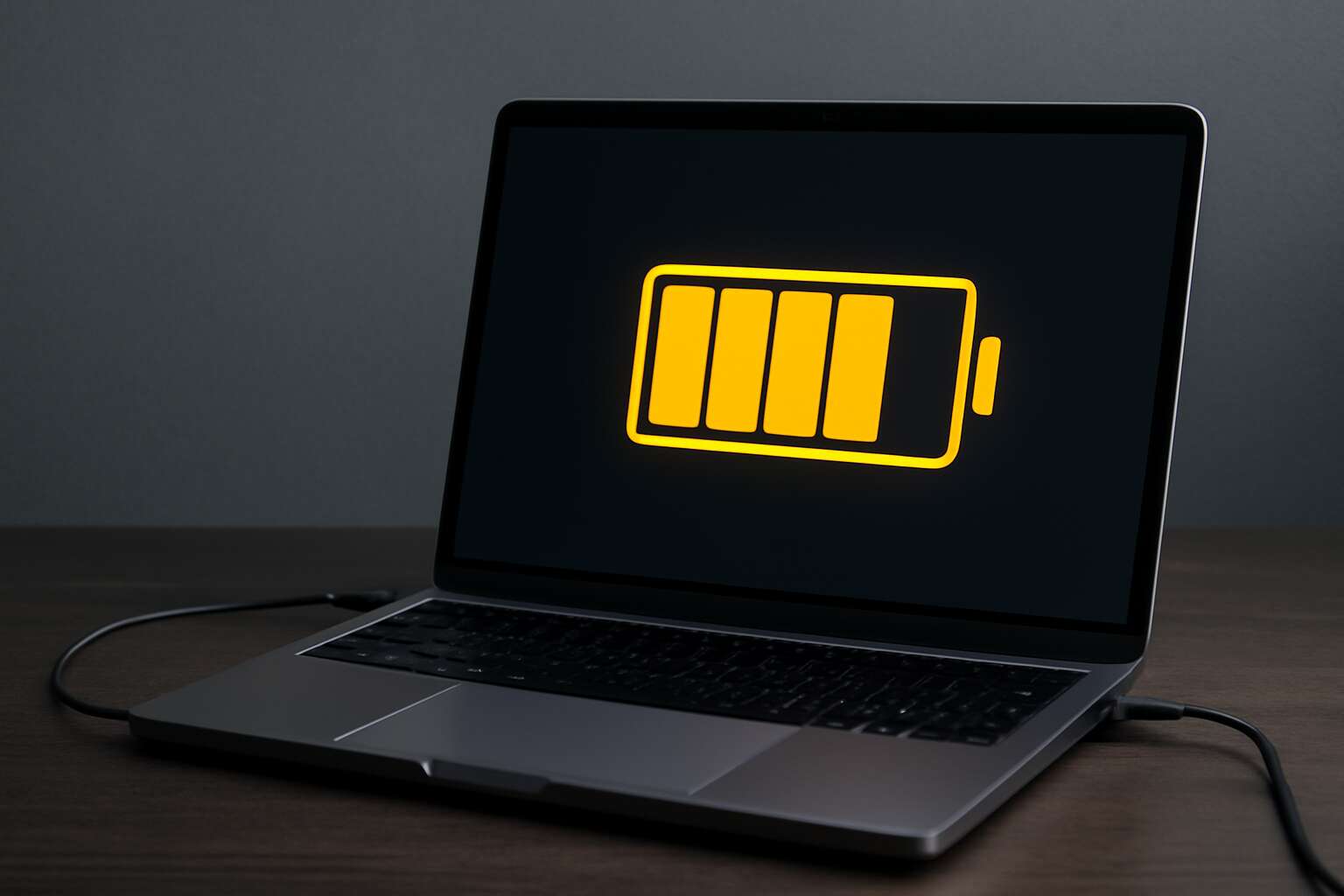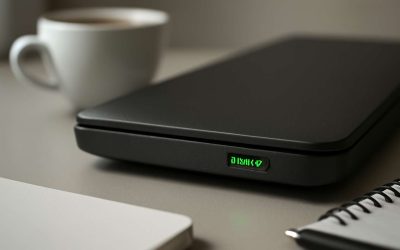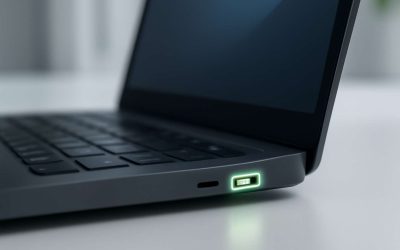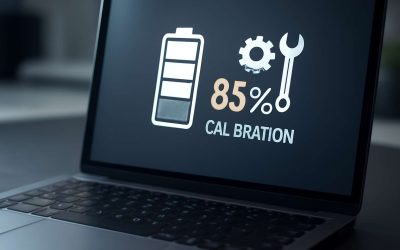Understanding Laptop Power Sources
Types of Laptop Power Connections
When considering a laptop without battery performance, understanding the different types of power sources becomes paramount. These devices rely solely on their power connections, revealing the true essence of their operational limitations and capabilities. Unlike traditional laptops that gracefully transition between battery and mains power, these machines demand a constant, stable connection to function optimally. This dependence strips away the convenience of portability, forcing users to rethink their interaction with technology in profound ways.
There are primarily two categories of laptop power connections that define these machines:
- AC power adapters—robust and straightforward, these adapters connect directly to an electrical outlet, supplying a continuous flow of energy.
- Power over Ethernet (PoE)—a less conventional but increasingly relevant method, especially in specialized environments where traditional power outlets are scarce.
In essence, the absence of a battery in a laptop transforms its relationship with power into an unyielding tether—an unbreakable link that demands consistency and precision, echoing a deeper philosophical truth about reliance and independence in our digital lives. It’s a stark reminder that sometimes, true resilience lies in understanding the boundaries of our tools, rather than in their autonomy.
Role of the Battery in Laptop Performance
The role of the battery in a laptop’s performance is often underestimated until it’s absent. A laptop without battery performance relies entirely on its power source, transforming what was once a portable device into a stationary powerhouse. When a battery is integrated, it acts as a buffer, allowing seamless transitions between power sources and providing a cushion during unexpected outages. Without this buffer, the entire system becomes more sensitive to power fluctuations, demanding unwavering stability from the power connection.
In a scenario where a laptop without battery performance is used, the importance of a consistent power supply cannot be overstated. Any interruption or fluctuation can lead to data loss or system instability. This reliance on a constant connection elevates the significance of reliable power sources, such as high-quality AC power adapters or Power over Ethernet (PoE), especially in environments where traditional outlets are scarce or unreliable.
- Continuous power dependency
- Increased vulnerability to power fluctuations
- Enhanced need for stable, high-quality power sources
Understanding these factors underscores how the absence of a battery redefines the very essence of laptop performance — it becomes a device that demands resilience from its power infrastructure, echoing a broader theme of reliance and precision in our digital pursuits. The mystery lies in how this dependency shapes our interactions with technology, revealing both its vulnerabilities and its unyielding need for stability.
What Happens When a Laptop Operates Without a Battery
Direct Power Dependency
Operating a laptop without a battery isn’t just a matter of plugging it into the wall—it’s a delicate dance with power stability. When a laptop functions solely on direct power, it becomes vulnerable to sudden outages caused by power surges or interruptions. This fragility can lead to unexpected shutdowns, risking data loss and potential hardware damage.
Interestingly, some laptops are designed to run without batteries, but their performance can be unpredictable. Without the buffer of a battery, fluctuations in power can cause the device to behave erratically. For example, during a power surge, the absence of a battery means there’s no safeguard against voltage spikes, which can jeopardize internal components.
Furthermore, the laptop’s performance without a battery can be compromised by the lack of a steady power supply, especially in regions with inconsistent electricity. In such cases, the laptop’s overall stability and longevity are at stake—making the understanding of how a laptop operates without a battery vital for users seeking reliability.
Operational Limitations
Operating a laptop without a battery introduces a cascade of operational limitations that can catch even the most seasoned users off guard. Without the buffer of a battery, the device becomes acutely sensitive to power fluctuations, making it prone to sudden shutdowns during voltage surges or power outages. This fragility isn’t just inconvenient—it poses a real risk to data integrity and hardware longevity.
In some cases, laptops designed to run without a battery can exhibit unpredictable behavior. Power instability causes erratic performance, and in regions like South Africa, where electricity can be unreliable, these issues become even more pronounced. The absence of a battery means there’s no safety net to smooth out voltage spikes, increasing the chance of internal component damage. The performance of a laptop without battery performance can thus be severely compromised, highlighting the importance of understanding these operational limits.
System Behavior During Power Outages
When a laptop operates without a battery system during a power outage, it often reveals its true fragility. Without the buffer of a battery, the device becomes highly vulnerable to sudden voltage fluctuations, leading to unpredictable behavior. In regions like South Africa, where power outages are common, this vulnerability becomes painfully evident. A surge or blackout can cause the laptop to shut down instantly, risking data loss and hardware damage.
In such scenarios, the laptop’s performance without a battery can become erratic, with system crashes or freezes that disrupt workflow. Unlike systems with a battery, which can sustain operation momentarily, a laptop without battery performance relies solely on stable external power. This dependency means that even brief power interruptions can have outsized consequences, highlighting the critical need for uninterrupted power supply solutions in areas with unreliable electricity.
Performance Impacts of Using a Laptop Without a Battery
Potential Performance Degradation
When a laptop operates without a battery, the very essence of its performance undergoes a subtle but profound transformation. The reliance shifts entirely to the power supply, exposing vulnerabilities that often go unnoticed. Without the buffer of a battery, even minor fluctuations in power can ripple through the system, affecting stability and responsiveness.
This scenario can lead to potential performance degradation, especially during unexpected power disruptions. The absence of a battery means the laptop cannot buffer power surges or dips, which may result in sudden shutdowns or hardware stress. Over time, this can cause wear on internal components, subtly diminishing the device’s efficiency and longevity. It’s as if the laptop is operating on a razor’s edge, constantly vulnerable to external forces.
For those who depend heavily on seamless productivity, understanding the implications of a laptop without battery performance becomes crucial. The stability of your workflow hinges on the resilience of your device—something that a battery, ironically, helps maintain. When the battery is missing, the system’s performance is no longer just about raw power but also about resilience in the face of unpredictability.
Temperature and Cooling Considerations
Running a laptop without a battery isn’t just a quirky experiment; it’s a high-stakes balancing act—like walking a tightrope in a gusty storm. One often overlooked aspect is temperature and cooling. Without a battery, your device’s internal temperature management becomes more critical, as the system relies solely on its cooling mechanisms to prevent overheating. Excess heat can lead to thermal throttling, where the processor voluntarily slows down to avoid frying itself, drastically impacting laptop without battery performance.
Furthermore, the absence of a battery can cause the system to run hotter because the battery typically acts as a heat sink, helping disperse heat. If cooling isn’t up to scratch, this heat buildup can accelerate hardware wear, subtly diminishing performance over time. For those who push their laptops into demanding tasks, this heat stress can turn into a silent performance killer. Remember, when operating a laptop without a battery, maintaining optimal temperature and ensuring effective cooling isn’t just a good idea—it’s essential for preserving overall performance and longevity.
Overclocking and High-Performance Tasks
When pushing a laptop without battery performance to its limits, overclocking and high-performance tasks can become a double-edged sword. Without the buffer of a battery, power fluctuations and sudden surges can cause instability, making intensive workloads riskier. Overclocking, in particular, demands a steady power supply—something that a laptop without battery might struggle to provide consistently.
High-performance tasks such as gaming, video editing, or 3D rendering place immense strain on your device’s hardware. Without the battery acting as a secondary power reservoir, any interruption or fluctuation in power delivery can lead to system freezes or unexpected shutdowns. This not only hampers productivity but also accelerates hardware wear, subtly degrading laptop without battery performance over time.
In essence, while operating a laptop without a battery might seem feasible for everyday tasks, demanding performance scenarios expose its vulnerabilities. The delicate balance of power and thermal management becomes even more critical, underscoring how reliant high-performance workflows are on a stable power environment. A laptop without battery performance is, therefore, less resilient when tested by the rigors of overclocking or intensive computing.
Best Practices for Operating a Laptop Without Battery
Using a UPS or Uninterruptible Power Supply
Operating a laptop without a battery performance, especially in environments where power stability remains elusive, demands a nuanced understanding of how to harness an uninterruptible power supply (UPS). In South Africa, where load shedding and inconsistent electricity supply are persistent challenges, leveraging a UPS becomes not just a convenience but a safeguard against data loss and system instability. The key lies in selecting a UPS capable of delivering a clean, stable current that can sustain your laptop’s operation during outages, preserving the integrity of ongoing tasks and reducing the risk of hardware stress.
It’s crucial to recognize that a laptop without battery performance relies heavily on the quality and capacity of the UPS. To maximize efficiency, consider using a surge protector and ensuring the UPS provides enough wattage to handle the laptop’s power draw. For optimal results, follow these steps:
- Connect your laptop directly to the UPS, avoiding daisy-chaining with other devices that could overload the system.
- Monitor the UPS’s battery status and runtime estimates closely, especially during prolonged outages.
- Schedule regular maintenance checks on your UPS to ensure it remains in peak condition, avoiding unexpected failures that could jeopardize your laptop’s operation.
When operating a laptop without battery performance with a UPS, understanding the delicate balance between power stability and system demands becomes vital. The goal is to create a seamless transition during blackouts, preventing unexpected shutdowns that could compromise your work or damage sensitive components. With mindful management, a UPS transforms from a mere backup into a guardian of your digital ecosystem, especially when battery health no longer supports the laptop’s peak performance.
Ensuring Safe Power Delivery
Operating a laptop without battery performance is akin to walking a tightrope over the digital abyss—balance is everything! In South Africa, where load shedding has become an unwelcome but persistent guest, mastering the art of safe power delivery is more than just a technical concern; it’s a survival skill. A well-chosen UPS not only keeps your device humming but also shields it from the chaos of sudden blackouts, safeguarding your data and sanity alike.
To ensure seamless operation, it’s vital to select a UPS that provides a clean, stable current—think of it as the fine wine of power supplies, smoothing out fluctuations and preventing surges. Connecting your laptop directly to the UPS, rather than daisy-chaining with multiple devices, minimizes overload risks and prolongs system stability. Regularly monitoring the UPS’s battery status and runtime estimates helps prevent unexpected shutdowns, especially during those lengthy outages that seem to stretch endlessly.
- Choose a UPS with sufficient wattage to meet your laptop’s power demands.
- Use a surge protector to guard against voltage spikes that could wreak havoc on sensitive components.
- Schedule routine maintenance checks—after all, even the most glamorous power backup needs a little TLC now and then.
Remember, operating a laptop without battery performance isn’t just about plugging in and praying; it’s about cultivating a symphony of stability. When the power falters, your system’s resilience hinges on your vigilance and the quality of your power infrastructure—because in South Africa, a little foresight can save you from a world of digital disarray.
Maintenance and Monitoring
Operating a laptop without battery performance is an exercise in patience and precision—think of it as a delicate dance on the edge of digital chaos. To keep your device running smoothly during those long South African load shedding episodes, diligent maintenance and vigilant monitoring are essential. A little foresight can turn potential disaster into seamless productivity.
Regularly checking the system’s power status is paramount. Many laptops provide built-in tools that display real-time battery health and power consumption metrics. When operating a laptop without battery performance, it’s crucial to keep an eye on these indicators to avoid unexpected shutdowns. A sudden power dip can compromise your work and data integrity, turning your day into a frustrating ordeal.
Furthermore, implementing a strategic approach to power management can be a game-changer. For instance, plugging your laptop directly into a reliable UPS ensures a stable, surge-free current—vital when your device relies solely on external power sources. Remember, the health of your laptop without battery performance hinges on consistent power delivery and vigilant oversight. In South Africa’s unpredictable energy landscape, maintaining this delicate balance is not just wise; it’s indispensable.
Risks and Precautions When Running Without a Battery
Hardware Damage Due to Power Fluctuations
Running a laptop without battery performance might sound like a free-spirited adventure, but beware—power fluctuations can turn this into a hardware minefield! Without the safety net of a battery, your device becomes vulnerable to sudden surges or dips in power, risking catastrophic hardware damage. Imagine your laptop as a delicate dance partner; a rogue power spike can send it stumbling, damaging sensitive components like the motherboard or CPU.
To mitigate these risks, it’s crucial to use a reliable uninterruptible power supply (UPS) or surge protector. These devices act as a buffer, smoothing out those unpredictable power fluctuations. Remember, a laptop without battery performance relies heavily on consistent power delivery—any inconsistency can spell disaster. So, always keep a close eye on your power source, or you might find yourself facing costly repairs that aren’t covered under warranty!
Data Security and Backup
Running a laptop without battery performance introduces serious risks beyond hardware damage. Data security becomes a pressing concern, especially if power interruptions occur unexpectedly. Without the safety net of a battery, sudden power dips or surges can corrupt files or cause data loss—disasters that no backup can always recover from. In environments where sensitive information is processed, this vulnerability heightens the importance of robust backup solutions.
Precautions are essential. Always ensure your data is backed up regularly, particularly when operating a laptop without battery performance. Use encrypted storage and reliable cloud services to safeguard critical information. Additionally, consider implementing an uninterruptible power supply (UPS) or surge protector. These devices act as a shield against unpredictable power fluctuations that could otherwise compromise your system’s integrity. Remember, in South Africa’s unpredictable power grid, relying solely on direct power without battery backup can be a gamble—one that risks data security and operational continuity.
Warranty and Manufacturer Guidelines
Operating a laptop without battery performance is a gamble that could cost more than just hardware repairs — it threatens your data integrity and operational stability. Without the safety net of a functioning battery, power fluctuations become a silent menace, lurking behind the scenes, ready to strike at any moment. In South Africa’s unpredictable power landscape, this vulnerability is amplified, making precautions not just wise but essential.
When using a laptop without battery performance, it’s vital to recognize the risks involved. Sudden power surges or dips can lead to catastrophic data loss or corruption, especially if there’s no reliable backup system in place. To mitigate these dangers, always adhere to the manufacturer’s guidelines and warranty stipulations, which often specify the importance of maintaining proper power conditions. Ignoring these recommendations can void warranties and leave you exposed to hardware failures.
- Implement a robust backup schedule, ensuring critical data is stored securely in encrypted cloud environments.
- Use surge protectors or an uninterruptible power supply (UPS) to shield your system against unpredictable power fluctuations.
- Regularly monitor your power infrastructure to detect anomalies early, avoiding costly downtime or data breaches.
Failure to follow these precautions can not only jeopardize your laptop without battery performance but also compromise sensitive information, leaving you vulnerable in a high-stakes environment. Remember, in regions where power stability is a concern, safeguarding your device with strategic precautions is not optional — it’s a necessity for preserving operational continuity and data security.
Choosing the Right Laptop for Battery-Free Use
Laptops Designed for Continuous Power
Choosing a laptop designed for continuous power is crucial when considering a device without battery performance. These specialized machines are built to operate solely on direct power, providing a seamless experience for users who require unwavering reliability. For those working long hours in environments where battery life is irrelevant, investing in models that excel in power stability can make all the difference.
When selecting a laptop without battery performance, it’s essential to consider the system’s power management features. Laptops with robust power delivery systems ensure consistent operation without interruptions, even during extended use. Additionally, look for devices with efficient cooling mechanisms to prevent overheating, which can compromise performance. In regions like South Africa, where power fluctuations are common, choosing a model designed for continuous power can help avoid data loss and hardware damage.
Features to Look For
Choosing the right laptop without battery performance is like seeking a loyal steed for a relentless journey—every detail counts. When operating solely on direct power, the device’s ability to manage power efficiently becomes paramount. Look for models that boast advanced power delivery systems, ensuring a steady flow that keeps your workflow uninterrupted and your focus sharp.
In environments where power stability is unpredictable, such as in South Africa, selecting a laptop without battery performance requires extra vigilance. Features like redundant power inputs or compatibility with uninterruptible power supplies (UPS) can provide a safety net against sudden outages. Additionally, a robust cooling mechanism is vital; high-performance tasks can generate heat that, if unchecked, hampers performance or damages hardware.
- Reliable power connectors
- Efficient cooling systems
- Compatibility with UPS devices
By prioritizing these features, users can harness the full potential of a laptop without battery performance, turning potential vulnerabilities into pillars of stability and productivity. Such devices become true workhorses, built to thrive in the demanding landscapes of modern enterprise and innovation.
Price and Availability
Choosing the right laptop without battery performance often hinges on more than just technical specifications; it’s about affordability and accessibility. In South Africa’s fluctuating market, where supply chains can be unpredictable, finding a device that balances cost and availability is crucial. High-end models with advanced power delivery systems tend to carry a premium, but there are cost-effective options with reliable performance tailored for direct power use.
The key is to prioritize models that are readily available within local markets—often from trusted brands known for durability and stability. For those seeking a seamless experience, it’s wise to consider the long-term costs, including potential repairs or upgrades. The best approach is to evaluate not only the initial price but also the device’s compatibility with local power infrastructure, ensuring a smooth workflow without unexpected expenses.
In essence, selecting a laptop without battery performance becomes a game of strategic sourcing—where affordability, supply, and dependable power connectivity converge to deliver optimal productivity.




0 Comments